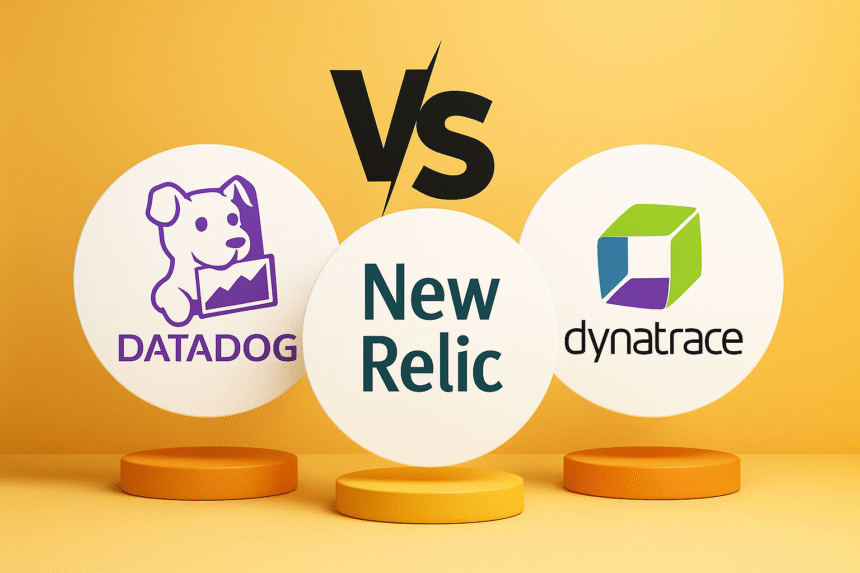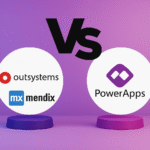Your DevOps bill is out of control. Datadog is costing $50,000 per month. Your data ingestion keeps growing. Every time someone asks for “just one more dashboard,” costs spike another $5,000.
- Why Observability Became So Expensive
- The Platform Breakdown: What You Actually Get (And Pay For)
- Datadog: The Market Leader With Sticker Shock
- New Relic: The “Simpler Pricing” That Isn’t
- Dynatrace: The AI-First Premium Option
- The Alternatives Nobody Talks About
- Splunk: The Enterprise Alternative
- Elastic Stack (ELK): The DIY Option
- Uptrace: The Modern Open-Source Alternative
- The Honest Cost Comparison
- Making The Decision
- The Hidden Cost Everyone Ignores
- Conclusion: Stop Waiting For Perfect Pricing
So you look at alternatives. New Relic? Their per-user pricing creates a different problem—you limit access so people stop clicking around, defeating the point of observability. Dynatrace? Powerful but even more expensive.
The observability market has become a minefield of pricing tricks, complex SKUs, and hidden costs. And somehow, every tool costs more than you budget for, delivering less value than promised.
I’m going to walk through the reality of observability in 2025, why pricing is so confusing, and which platform actually makes sense for your situation.
Why Observability Became So Expensive
Five years ago, observability was simple. You deployed an agent, collected metrics, threw data at a dashboard. Costs were predictable.
Then everything changed. Applications exploded into microservices. Data volume grew exponentially. Customers demanded full-stack visibility (logs, metrics, traces, real user monitoring, synthetics). Platforms added AI, anomaly detection, security scanning.
Each feature added value. But also added cost. And platforms started charging for things separately that used to be bundled.
According to Uptrace’s 2025 observability market analysis, Datadog now charges differently for:
- Infrastructure monitoring (metrics)
- Log management
- APM (application performance)
- Real User Monitoring (RUM)
- Synthetic monitoring
- Security monitoring
- Custom metrics
- Error tracking
- Database monitoring
- Network monitoring
Each is a separate SKU with separate pricing. Your “observability” bill isn’t one number—it’s ten numbers that don’t add up.
The Platform Breakdown: What You Actually Get (And Pay For)
Datadog: The Market Leader With Sticker Shock
Market position: According to Uptrace, Datadog owns 51.82% of the observability market. If you’re evaluating platforms, you’re probably evaluating Datadog.
What is it? Datadog is a unified observability platform providing metrics, logs, traces, real user monitoring, synthetic monitoring, security scanning, and cost optimization. 850+ integrations mean it connects to practically everything.
Pricing (the confusing part): According to Middleware’s analysis:
- Infrastructure monitoring (Pro): $15/host/month (annual), $18/host/month (monthly)
- Infrastructure monitoring (Enterprise): $23/host/month (annual), $27/host/month (monthly)
- APM: $31/host/month (annual), $36/host/month (monthly)
- Log management: $0.10 per GB ingested per month
- Custom metrics: $0.05 per custom metric
- Real User Monitoring: Separate pricing per session
- Synthetic monitoring: Separate pricing per test
- Security monitoring: Additional cost
Real-world cost example: A mid-sized SaaS company with 100 hosts, 500 GB of logs per month, RUM, and synthetic monitoring easily hits $30,000-50,000 monthly. That $15/host/month baseline? That’s the start of a 10-item bill that gets ugly fast.
What you get: Best-in-class UI. Strongest AI anomaly detection. Most integrations. Superior ease-of-use. If cost wasn’t a factor, Datadog is the obvious choice.
The catch: Pricing is unpredictable. A traffic spike doubles your log ingestion and suddenly your bill increases $20,000. There’s no way to know your spend in advance.
Best for: Organizations where cost isn’t the primary constraint. Enterprise customers willing to pay for best-in-class tooling. Companies already committed to the Datadog ecosystem.
New Relic: The “Simpler Pricing” That Isn’t
Market position: 24% market share per Uptrace. Distant second to Datadog but solid market position.
What is it? New Relic started as APM specialist, evolved into full-stack observability. Strong emphasis on developer experience and ease of use.
Pricing: New Relic pitches itself as “simpler” than Datadog. They have a point—but “simpler” isn’t the same as “cheaper.” According to Dash0’s analysis:
- Free tier: 100GB/month data ingest, 1 full-platform user, forever free
- Standard plan: $99/month for full platform
- Pro plan: Full-platform users at $349/user/month
- Enterprise: Custom pricing
The catch with per-user pricing: This is where New Relic’s simplicity becomes a cost trap. If you want your whole team to use New Relic, you’re paying $349/user/month per person. Five users? $1,745/month minimum. Ten users? $3,490/month.
This creates perverse incentives: you limit who can access New Relic to control costs, which defeats the point of observability (everyone on your team should be able to debug).
What you get: Generous free tier (100GB/month is legitimately useful). Simplified UI. Strong APM heritage. Good for developers.
The honest assessment: New Relic works great if you have a small team. But as your team grows, per-user pricing becomes prohibitive. Datadog’s host-based model is actually cheaper at scale.
Best for: Small teams, developers, startups in early stages. Companies willing to limit access to control per-user costs.
Dynatrace: The AI-First Premium Option
Market position: 3.38% market share but premium positioning. Dynatrace targets enterprises wanting AI-driven insights.
What is it? Dynatrace emphasizes automation and AI. “Davis” is their AI engine that does root-cause analysis, anomaly detection, automatic baselining. Less about DIY dashboards, more about AI-driven insights.
Pricing: According to Middleware’s analysis:
- Full-Stack Monitoring: $0.08 per hour for 8GB host
- Infrastructure Monitoring: $0.04 per hour for any-size host
- Kubernetes Platform Monitoring: $0.002 per hour for pod
- Application Security: $0.018 per hour for 8GB host
- Real User Monitoring: $0.00225 per session
- Synthetic Monitoring: $0.001 per synthetic request
In real terms? Dynatrace is typically more expensive than Datadog or New Relic for comparable deployments. Organizations often budget $100,000+ annually for Dynatrace Enterprise.
What you get: Industry-leading AI for root-cause analysis. Automatic instrumentation (minimal manual setup). Strong for large, complex environments. Enterprise-grade.
The catch: Premium pricing. Steep learning curve. Best value comes from letting the AI do its job (trusting the insights), which requires behavior change from teams used to DIY troubleshooting.
Best for: Large enterprises with complex, multi-cloud environments. Organizations wanting AI-first approach over manual dashboards. Companies with budgets to match.
The Alternatives Nobody Talks About
If you’re being gouged by the big three, alternatives exist.
Splunk: The Enterprise Alternative
What it is: Splunk is actually two products now—Splunk Cloud (SaaS) and Splunk Enterprise (on-prem). Traditional focus on log search and analysis, evolved into observability competitor.
Pricing: According to Last9’s detailed comparison, Splunk charges approximately $150 per GB ingested per month. For large deployments, this is typically $100,000+ annually.
Real story: Splunk is popular in regulated industries (finance, healthcare) because it has deep compliance and audit trail features. If you’re in healthcare/finance and need audit logs everywhere, Splunk is worth the cost.
For typical tech companies? Datadog is probably cheaper.
Best for: Enterprises in regulated industries, organizations already invested in Splunk ecosystem, teams focused on security and audit trails.
Elastic Stack (ELK): The DIY Option
What it is: Open-source observability: Elasticsearch (storage/search), Logstash (data pipeline), Kibana (visualization). Also commercial Elastic Cloud SaaS version.
Pricing: According to SigNoz’s comparison, open-source is free. Elastic Cloud SaaS starts at $14.95/month but scales quickly.
Real story: Elastic is beloved by teams that want control and don’t mind operational overhead. You run your own infrastructure, you own your data, you control every aspect. Costs are lower if you’re willing to manage it yourself.
The downside? You’re running production infrastructure. If something breaks, your team fixes it. This is only viable if you have DevOps expertise.
Best for: Organizations with strong DevOps teams, companies wanting data ownership, teams comfortable managing their own infrastructure.
Uptrace: The Modern Open-Source Alternative
What it is: Uptrace is newer, focused on OpenTelemetry. Simpler than Elastic, cheaper than Datadog, modern architecture built for cloud-native applications.
Pricing: According to Uptrace’s analysis, significantly cheaper than Datadog, comparable features, transparent pricing.
Real story: Uptrace appeals to teams uncomfortable with Datadog pricing but not ready to manage Elastic themselves. It’s a sweet spot: managed SaaS with transparent costs.
The downside? Smaller ecosystem, fewer integrations, less mature than competitors.
Best for: Cost-conscious teams, organizations valuing transparency, teams comfortable with newer tools, microservices/Kubernetes deployments.
The Honest Cost Comparison
Let’s compare actual costs for a realistic scenario: 50 hosts, 1TB logs/month, RUM, synthetics, APM.
Datadog:
- 50 hosts × $18/host (Pro, monthly) = $900/month
- 1000 GB logs × $0.10 = $100/month
- APM: $50 hosts × $36/host = $1,800/month
- RUM, synthetics, security: estimate +$500/month
- Total: ~$3,300/month or $39,600/year
New Relic:
- Free tier max out fast with this volume
- Pro plan: $99/month base
- But full-platform users required: estimate 5 users × $349 = $1,745/month
- Additional ingest overages: +$500/month estimate
- Total: ~$2,344/month or $28,128/year
Dynatrace:
- 50 hosts × 8GB equivalent × $0.08/hour × 730 hours = $2,336/month
- Additional monitoring, security: +$1,000/month
- Total: ~$3,336/month or $40,032/year
Uptrace (estimated):
- Similar to New Relic but lower: ~$1,500-2,000/month
- Total: ~$18,000-24,000/year
Elastic (self-hosted):
- Infrastructure cost: estimate $2,000/month AWS
- Your team managing it: cost in engineering time
- Total: $24,000/year + personnel
Making The Decision
If cost doesn’t matter: Use Datadog. It’s the best product. Period.
If you’re cost-conscious but want managed SaaS: Use Uptrace or consider New Relic if team is small.
If you have DevOps expertise and want to own infrastructure: Use Elastic Stack or self-hosted Prometheus + Grafana.
If you’re in regulated industry: Use Splunk. The compliance and audit features justify premium pricing.
If you need AI-driven insights: Use Dynatrace despite the cost. The AI is genuinely better.
The Hidden Cost Everyone Ignores
Nobody talks about operational cost. Regardless of platform, observability requires people:
- Building dashboards
- Managing alerting (false alerts waste engineering time)
- Interpreting data
- Troubleshooting with observability
A bad observability tool costs $20,000/month and wastes 5 hours per week per engineer troubleshooting. A good tool costs $40,000/month but saves 20 hours per week per engineer troubleshooting.
Sometimes paying more saves money overall.
Conclusion: Stop Waiting For Perfect Pricing
Observability pricing will never feel fair. Every platform is expensive relative to what you’re used to paying. But observability isn’t optional anymore—it’s how you operate in production.
Pick based on your constraint: if you have budget, use Datadog. If you don’t, use Uptrace or self-host Elastic. Either way, observability is non-negotiable.
The real question isn’t “which tool is cheapest?” It’s “which tool saves my team the most time troubleshooting?”
Optimize for that, not for pricing.












